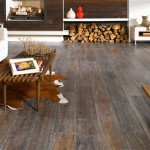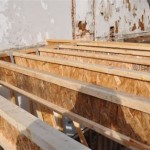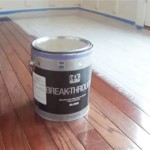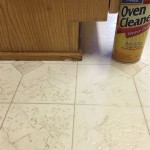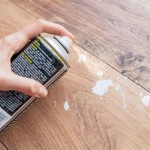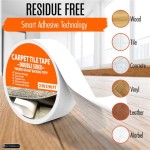Is Polypropylene Safe For Vinyl Plank Flooring?
Vinyl plank flooring has become a popular choice for residential and commercial spaces due to its durability, water resistance, aesthetic appeal, and relatively affordable cost. The composition of vinyl plank flooring can vary between manufacturers, but often includes polyvinyl chloride (PVC) as a primary component. However, other materials are also utilized to enhance performance, stability, and overall characteristics. One such material is polypropylene (PP). The question of whether polypropylene is safe for use in vinyl plank flooring warrants a thorough examination, considering potential health and environmental impacts.
To understand the safety considerations, it's important to first define what polypropylene is and its role in vinyl plank flooring. Polypropylene is a thermoplastic polymer, meaning it becomes pliable and moldable at elevated temperatures and solidifies upon cooling. It is widely used in various applications, including packaging, textiles, automotive parts, and consumer goods. In the context of vinyl plank flooring, polypropylene can be incorporated as a component in the core layer, the wear layer, or the backing. It contributes to the overall structural integrity, impact resistance, and dimensional stability of the flooring product.
The safety of polypropylene depends on various factors, including the specific grade of polypropylene used, the manufacturing processes employed, and any potential leaching or off-gassing of volatile organic compounds (VOCs). A comprehensive assessment requires considering both the inherent properties of polypropylene and the potential risks associated with its use in flooring materials.
Understanding Polypropylene's Material Properties and Potential Hazards
Polypropylene is generally considered to be a relatively safe material. It is chemically inert, meaning it doesn't readily react with other substances under normal conditions. It is also resistant to many chemicals, solvents, and moisture, which contributes to the durability and longevity of products that incorporate polypropylene. Moreover, polypropylene is recyclable, offering a potential end-of-life solution for disposed flooring materials.
However, certain potential hazards are associated with polypropylene. One concern is the potential for the release of VOCs. VOCs are organic chemicals that evaporate at room temperature and can contribute to indoor air pollution. Some VOCs are known to have adverse health effects, ranging from mild irritation to more serious respiratory problems. While polypropylene itself is not a significant source of VOCs, additives used during the manufacturing process, such as stabilizers, plasticizers, or colorants, can potentially release VOCs. The type and quantity of these additives, as well as the manufacturing techniques employed, influence the level of VOC emissions.
Another potential concern arises during the manufacturing and disposal processes. The production of polypropylene involves the use of fossil fuels and can result in greenhouse gas emissions. Improper disposal of polypropylene products can contribute to plastic pollution in landfills and waterways. Therefore, responsible sourcing, eco-friendly manufacturing practices, and effective waste management strategies are crucial to mitigate these environmental impacts.
Furthermore, the flammability of polypropylene is a consideration. Polypropylene is combustible and can release toxic fumes when burned. While vinyl plank flooring is typically treated with flame retardants to reduce its flammability, the presence of polypropylene can still pose a fire hazard. It's therefore essential to choose flooring products that meet relevant fire safety standards and to implement appropriate fire prevention measures.
Assessing VOC Emissions and Indoor Air Quality
The primary safety concern regarding polypropylene in vinyl plank flooring centers around the potential for VOC emissions. To address this concern, various standards and certifications have been developed to regulate VOC emissions from building materials, including flooring. These standards set limits on the allowable levels of specific VOCs, ensuring that products meet certain indoor air quality requirements.
One prominent certification is the FloorScore certification, which is administered by the Resilient Floor Covering Institute (RFCI). FloorScore-certified flooring products have been independently tested and verified to meet stringent VOC emission limits. This certification indicates that the flooring material contributes to healthy indoor air quality and is safe for use in homes, schools, and other sensitive environments.
Another relevant standard is the California Department of Public Health (CDPH) Standard Method v1.2, which specifies testing procedures for VOC emissions from building materials. Products that meet the CDPH Standard Method v1.2 are considered to have low VOC emissions and are often preferred for projects that prioritize indoor air quality. These certifications and standards provide a reliable means of assessing the VOC emissions of vinyl plank flooring and ensuring that it meets established safety criteria.
In addition to testing and certification, proper ventilation is crucial for mitigating the potential impact of VOC emissions on indoor air quality. During and after the installation of new flooring, it's important to ensure adequate ventilation to allow any residual VOCs to dissipate. Opening windows, using fans, or employing air purifiers can help to improve air circulation and reduce VOC concentrations.
Consumers can also request information from manufacturers regarding the VOC emissions of their vinyl plank flooring products. Responsible manufacturers will provide data on the specific VOCs emitted and their concentrations, allowing consumers to make informed decisions about the safety of the flooring material. Selecting flooring products with low VOC emissions is a proactive measure to promote healthy indoor air quality and minimize potential health risks.
Evaluating Manufacturing Processes and Environmental Impact
The safety of polypropylene in vinyl plank flooring is not solely determined by the material itself but also by the manufacturing processes involved. Environmentally responsible manufacturing practices can significantly reduce the potential for harmful emissions and waste generation. Manufacturers that prioritize sustainability often implement measures such as using recycled materials, optimizing energy efficiency, and minimizing waste.
The use of recycled polypropylene in vinyl plank flooring is a positive step towards reducing environmental impact. Recycled polypropylene can be sourced from post-consumer or post-industrial waste streams, diverting materials from landfills and reducing the demand for virgin polypropylene. Flooring products that incorporate recycled content contribute to a circular economy and minimize the environmental footprint of the flooring industry.
Manufacturers can also reduce the environmental impact of their operations by implementing closed-loop manufacturing processes. These processes aim to minimize waste generation by recycling or reusing materials within the manufacturing facility. For example, polypropylene scrap or off-cuts can be reprocessed and incorporated back into the production stream, reducing the need for virgin materials and minimizing waste disposal.
Furthermore, the use of water-based adhesives and low-VOC coatings in vinyl plank flooring can significantly reduce the release of harmful chemicals during installation and use. Traditional solvent-based adhesives and coatings can emit high levels of VOCs, contributing to indoor air pollution. Water-based alternatives offer a safer and more environmentally friendly option, minimizing potential health risks.
Finally, proper waste management practices are essential for minimizing the environmental impact of vinyl plank flooring disposal. Recycling programs for vinyl flooring are becoming increasingly available, allowing consumers to recycle their old flooring materials instead of sending them to landfills. These programs typically involve collecting used flooring, processing it into raw materials, and using those materials to manufacture new flooring products. By participating in recycling programs, consumers can contribute to a more sustainable flooring industry and reduce the environmental burden of flooring disposal.
In conclusion, the safety of polypropylene in vinyl plank flooring is a multifaceted issue that requires careful consideration of material properties, VOC emissions, manufacturing processes, and waste management practices. While polypropylene itself is generally considered a relatively safe material, the potential for VOC emissions from additives and the environmental impacts of manufacturing and disposal must be addressed. Choosing flooring products that are certified for low VOC emissions, manufactured using environmentally responsible practices, and disposed of properly can help to minimize potential health and environmental risks. A comprehensive approach that encompasses material selection, manufacturing processes, and end-of-life management is essential for ensuring the safety and sustainability of vinyl plank flooring.

Is Polypropylene Safe For Vinyl Plank Flooring Chemistry Everyone

Is Polypropylene Safe For Vinyl Floors Chemistry Everyone

What Rug Backing Is Safe For Vinyl Plank Flooring Detailed

What Rug Backing Is Safe For Vinyl Plank Flooring Detailed

Is Polypropylene Safe For Vinyl Plank Flooring Chemistry Everyone

Is Polypropylene Safe For Vinyl Floors Chemistry Everyone
Is Polypropylene Safe On Vinyl Floors A Comprehensive Guide

Is Polyisocyanurate Safe With Vinyl Floor Plank
Is Polypropylene Safe On Vinyl Floors A Comprehensive Guide

Non Toxic Vinyl Plank Flooring Brands The Risks My Chemical Free House
See Also
